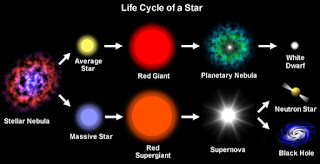CRAZY SCIENCE EXPERIMENTS IN SPACE SHUTTLE
Outlined below are some of the coolest Space Shuttle Science Experiments:
1. Microbes Get More Virulent In Microgravity.
Experiments aboard the space shuttle have shown that salmonella bacteria, a common and sometimes deadly source of food poisoning, get more virulent in space.
Scientist believe that the bacteria get ramped up because space flight tricks them into behaving as if they're inside the human gut. The shuttle missions also identified dozens of genes that seem to be involved in the hyper-virulence, as well as "master switch" protein that regulates many of these genes.
2. Space Roses Smell Different.
It sounds like some sort of symbolic or ceremonial gesture: The Shuttle Discovery carried a single rose to orbit on its STS-95 mission in 1998.
But there was science, and business, behind the move. The company International Flavours and Fragrances (IFF) wanted to see how microgravity altered the sweet and familiar scent of a Rose — and if a new perfume component might come out of the experiment.
So IFF sent a miniature rose plant up, and shuttle astronaut sampled its volatile oils, which carry the essential odours of the flower.
It turned out that the space Rose produce fewer volatiles than its counterparts did back on Earth. And, more importantly, its overall fragrance was entirely different.
3. Bigger And Better Protein Crystals.
The Shuttle Columbia's STS-9 mission which launched in November 1983, was the first to conduct experiments in a reusable laboratory called Spacelab. Of the dozens of studies performed on that 10-day flight one stands out nearly three decades later: STS-9 Astronauts cultivated the first protein crystals ever grown in space.
Scientist found that crystals grown in space are larger and more neatly ordered – and thirst easier to subject to X-ray structural analysis – than those grown there on Earth. Space-grown crystals therefore have great potential to help scientists understand how certain proteins work, perhaps leading to better and more targeted drugs in the future.
4. Flames Are Spheres.
On Earth 🌎, flames rise. In space, they move outward from their source in all directions. Here's why:
The closer you are to the Earth's surface, the more air molecules there are, thanks to the planets gravity pulling them there. Conversely, the atmosphere gets thinner and thinner as you move vertically, causing a gradual decline in pressure.
The atmospheric pressure difference over a height of one inch, though slight, is enough to shape a candle flame.
That pressure difference causes an effect called natural convection. As the air around a flame heats up, it expands, becoming less dense than the cold air surrounding it. As the hot air molecules expand out word, cold air molecules push back against them. Because there are more cold air molecules pushing against the hot molecules at the bottom of the flame than there are at its top, the flame experiences less resistance at the top. And so it buoys upward.
When there is no gravity, though, the expanding hot air experiences equal resistance in all directions, and so it moves spherically outward from its source.
5. Miscible Fluids In Space.
Honey and water are miscible fluids, that means, fluids that dissolve completely in each other. Water will be injected into honey to test if it will act like an immicsible fluid, such as water being injected into oil, and spontaneously form a spherical drop. The experiment needs to be performed in weightlessness.
Oil and water may not mix, but honey and Water do. The latter are miscible fluids, meaning they dissolve completely in each other, while the former are immiscible, which do not. Ground-based research indicates that miscible fluids sometimes can act immiscible, and this investigation tested whether that holds in weightlessness. Honey and water were used because they were already on the Station. A stream of honey injected into water broke into small drops, and an aspherical drop of water in honey spontaneously assume a spherical shape. No behaviour beyond simple diffusion was observed. This information may be important for materials processing and fluid handling in weightlessness.
Amazing Facts
✓ In Space the skin on your feet peels off!
This is a pretty gross fact but in the microgravity environment, astronauts are not using their feet to walk. Therefore the skin on their feet starts to soften and flakes off. As laundry facilities do not exist in space, astronauts will wear the same underwear and socks for a few days. Those socks then need to be taken of very gently. If not, those dead skin cells will float around the weightless environment.
✓ In Space metal sticks together!
In a vacuum like space, when two pieces of metal touch each other they bond together. This is a process called welding. On the Earth because of the oxygen in our environment this does not happen naturally but it is used during some manufacturing processes. It is something to take into account but it is not usually a problem as the astronaut's tools maintain and oxide layer even when leaving Earth.
✓ The hottest planet is not the closest planet to the Sun.
Even though Mercury is the closest planet to the Sun, it is not actually the hottest. Mercury does not have any atmosphere meaning that this planet is only hot in the daytime when it is directly facing the sun. At this stage temperatures can rise to 425°C but at night the planet's temperature can drop down to a freezing –180°C. Venus is the hottest planet. It's thick clouds trap the Sun's heat causing Venus to be a sizzling 500°C all of the time!
Learn about Top 7 food myths .









Comments
Post a Comment